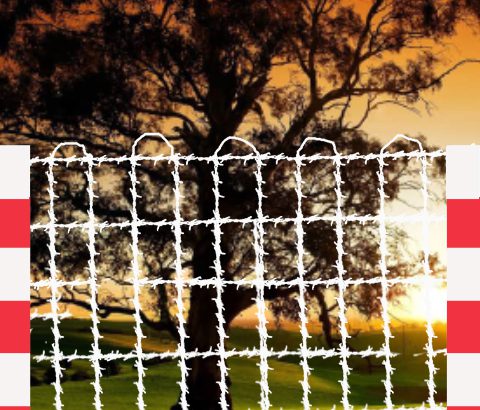
Fencing Model: Rectangle Wire
Barbed wire is a type of steel fencing wire constructed with sharp edges or points arranged at intervals along the strands. It is used to construct inexpensive fences and is used a top walls surrounding secured property. Barbed wire fencing requires only fence posts, wire, and fixing devices such as staples. It is simple to construct and quick to erect, even by an unskilled person.
We provide high quality barbed wires which are known for their dimensional accuracy, high service life and fine finish.
Benefits of Barbed Wire
- Helps keep animals in or out of a perimeter fence
- Used in agricultural, domestic and commercial applications
- Galvanised high quality
- Heavy duty mild steel or high tensile options available
Barbed wire is commonly used for agricultural, domestic and commercial applications.
Used in an agricultural setting, barbed wire provides an effective protective measure to keep animals in or out of a perimeter fence and is often installed with stock netting to secure fields and paddocks. Barbed wire installed in conjunction with various fencing types can hold a visual and physical deterrent – we recommend warning signs if used near public areas. Barbed wire also has many commercial uses but for higher security applications, we would recommend barbed tape or razor wire.
Installation:
The installation of crosswire fence involves setting posts into the ground and attaching the fence to them. The posts may be steel tubing, timber or concrete and may be driven into the ground or set in concrete. End, corner or gate posts, commonly referred to as “terminal posts”, must be set in concrete footing or otherwise anchored to prevent leaning under the tension of a stretched fence. Posts set between the terminal posts are called “line posts” and are set at intervals not to exceed 10 feet. The installer attaches the fence at one end, stretches it, and attaches at the other, easily removing the excess by “unscrewing” a wire. In many cases, the installer stretches a bottom tension wire, sometimes referred to as “coil wire”, between terminal posts to help minimize the in and out movement that occurs at the bottom of the barbed wire between posts. Top horizontal rails are used on most barbed wire fences, although not necessary if the terminal posts are braced correctly. A top tension wire may be used in this situation. Bottom rails may be added in lieu of bottom tension wires, and for taller fences, 10 feet or more, intermediate horizontal rails are often added. Finally, vertical barbed wire as square or rectangle model will be installed in between horizontal lines.



